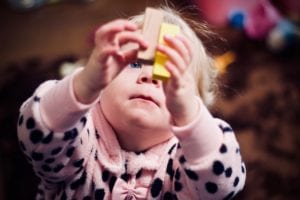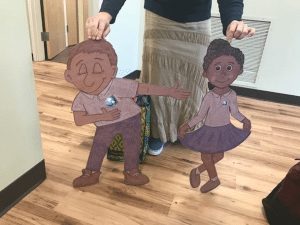Object Permanence
 Believe it or not, there was a time that you didn’t know that an object you didn’t see still existed. Object permanence is one of the first lessons a young baby or toddler learns. Maria Montessori developed specific material to help infants understand that just because you couldn’t see the cup or hear mommy or daddy that they still did exist.
Believe it or not, there was a time that you didn’t know that an object you didn’t see still existed. Object permanence is one of the first lessons a young baby or toddler learns. Maria Montessori developed specific material to help infants understand that just because you couldn’t see the cup or hear mommy or daddy that they still did exist.
Object permanence typically begins to develop in babies between 4-7 months of age, with most babies eight months and older having some sort of object permanence understanding. Before this development, babies believe once objects are out of sight, they are gone. Object permanence requires the ability to form a mental representation of the object.
Jean Piaget, a Swiss psychologist, brought awareness to a child’s need to develop object permanence. In his research, he used a blanket covering a ball to see that it was not until around eight months old that the child would look under the blanket for the missing toy.
Maria Montessori developed object permanence materials and incorporated it into her infant/toddler curriculum. They can be found in the movement curriculum area. There are two types of object permanence materials, with the second being slightly more challenging than the first.
The first object permanence material found in a Montessori environment is the object permanence box with tray. With this material, the child drops a small ball into a hole, and it quickly rolls on to the tray. The ball is only out of sight for a quick second. With this material, the child does not have to look or find the missing ball as it quickly repairs in the tray.
The second object permanence material found in an infant/toddler Montessori environment is the object permanence box with drawer. For this lesson, the child drops the small ball through the hole, but instead of rolling onto the tray, the child must pull open the drawer to find the missing ball. They are making it one step more challenging than the object permanence box with tray.
As with all Montessori materials, they have both direct and indirect aims. The immediate objective is to develop that items still exist out of sight, object permanence. The secondary objective is to develop fine motor skills of hand-eye coordination as the child must place the ball directly into the hole.
If you are looking for ways to help your child develop object permanence, you can purchase your object permanence box with tray here. Or you can play peek-a-boo, hide and seek, or cover a toy and have them find it.


